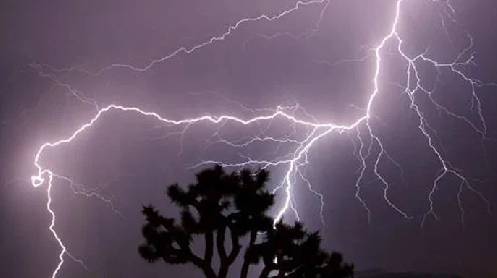KARACHI: Experts have raised alarms over the environmental impact of coal mining in Tharparkar, Sindh, highlighting its role in increasing lightning strikes in the region. Greenhouse gas (GHG) emissions from coal mining and power plants are driving localized warming and atmospheric humidity, contributing to severe weather anomalies, according to a study launched on Friday by the Policy Research Institute for Equitable Development (PRIED).
The study, titled “Exploring the Link Between Lightning Strikes and Coal: A Case Study of Tharparkar,” reveals a sharp rise in thunderstorms and lightning strikes, particularly in areas near active coal mines and power plants. These incidents have caused fatalities, significant livestock losses, and widespread destruction of homes and crops.
Pakistan has been grappling with climate-related disasters, including extreme heatwaves, glacial lake outburst floods (GLOFs), forest fires, and floods. The surge in lightning strikes in Tharparkar is an emerging phenomenon, underscoring the urgent need to assess anthropogenic factors such as GHG emissions, particulate matter, ash, and dust from coal activities.
Dr. Zulfiqar Ali Umrani, Director of ORIC and Sustainability at Ziauddin University, cited similar findings from studies in the US and India linking coal mining regions to increased lightning activity. He called for adopting clean energy alternatives like waste-to-energy production to mitigate these impacts.
The Provincial Disaster Management Authority (PDMA) is reportedly developing a response plan to address the rising lightning-related incidents, as confirmed by an official. Dr. Sardar Sarfaraz from the Meteorological Department of Sindh acknowledged the need for more research to conclusively link coal mining with increased lightning activity.
Badar Alam, CEO of PRIED, presented firsthand accounts from Tharparkar residents impacted by lightning strikes, along with data and scientific analyses from affected villages.
The report calls for urgent action, urging the government to transition to cleaner energy options to curb GHG emissions and reduce the frequency of such devastating phenomena.







